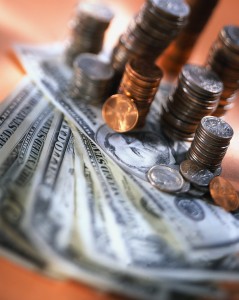 The biggest obstacle to making money is fear. When it comes to pricing, most sellers go in low. They’re afraid of being hit with a price objection. They’re afraid of a competitor embarrassing them with a much lower price. They’re afraid of jeopardizing a relationship that they may not even have yet. But, if a firm leaves $100 on the table here and $500 on the table there, the annual bottom-line damage could run to thousands or tens of thousands. No business can afford it, especially in this economic climate. Here, then, are five ideas to help you command a higher price for your stuff.
The biggest obstacle to making money is fear. When it comes to pricing, most sellers go in low. They’re afraid of being hit with a price objection. They’re afraid of a competitor embarrassing them with a much lower price. They’re afraid of jeopardizing a relationship that they may not even have yet. But, if a firm leaves $100 on the table here and $500 on the table there, the annual bottom-line damage could run to thousands or tens of thousands. No business can afford it, especially in this economic climate. Here, then, are five ideas to help you command a higher price for your stuff.
1. Ask before you quote. Take the guesswork out of pricing by asking the customer what price would be acceptable. There are a lot of ways to pose the question, but these are two of my favorites:
- How much have you budgeted for this project?
- Would a price in the range of x to y be acceptable?
Both questions are businesslike and reasonable. If the customer is willing to answer, you gain not only an idea of how to structure your pricing, but also some level of commitment that if your price is right, the customer will order.
True, customers are apt to give you a number lower than what they are willing to pay, but in my experience, the customer’s answer is often higher than what the seller was prepared to offer.
2. Offer volume discounts. Products obviously lend themselves to price breaks based on quantity. Similarly, services can be bundled; for instance, a landscaping firm can offer 5% off for customers who sign up for both lawn maintenance and snow removal. On the product side, give customers who are unable or unwilling to stock up the option of placing a discounted blanket order with set shipping dates. This is a win-win compromise.
Volume discounts help sustain relationships. When customers opt out of discounted options, at least they know that they have options; if a competitor comes in with a lower price, the customer will be more likely to negotiate with you.
3. Offer loyalty rebates. Speaking of relationships, loyalty rebates and related programs are terrific ways to keep customers happy without giving away the store. An effective rebate program looks like this:
- For $5,000 in annual purchases, 1% rebate
- For $10,000 in annual purchases, 2.5% rebate
- For $20,000 in annual purchases, 5% rebate
A few of the finer points of rebate deals:
- Don’t make the rebate percentages too high; if you do, customers think you’re overcharging them up front.
- Make the purchase targets realistic. Customers have to believe that they can reach the highest level.
- Don’t exclude particular types of purchases. If the deal is too complicated, it loses impact.
- Provide monthly status reports. They remind customers that the program exists and has value, and keeps their ordering on track.
4. Offer favorable terms. Everybody wants a special deal, so much so that some customers are happy to pay more if they can get something that their competitors may not be getting. Good options include:
- Billing discounts
- Extended billing terms
- Extended service contracts at a discounted price
- Quantity discounts on fill-in orders
- Free merchandise with every order
- One hour of free consulting every quarter
A little something extra goes a long way. When customers have a buying arrangement that offers real convenience or savings, they hate to give it up – even for a lower price.
5. Detail the value. Sellers talk a lot about the value of their products when they’re presenting, but not enough when they’re closing. In other words, sellers regard their stuff as special when they’re selling it, but as a commodity when they’re negotiating the deal.
To command a high price, write out as specifically as possible what the customer gains with a purchase. Don’t tape a lawn maintenance quote to somebody’s front door. Instead, go over your proposal with the customer and include bullet points that highlight your 15 years of reliable service in the neighborhood, the peace of mind that comes from knowing that your property will be protected from pests, and the pride of knowing that your yard will be the best looking one on the block.
At the beginning, I said that fear keeps sellers from making money. Detailing value transfers a little bit of that fear to the buyer. When customers understand the underlying value of your price, buying somewhere else begins to look risky. Will the other supplier be as reliable? What if there’s a problem? Is their “deal” too good to be true?
When price maximization techniques fail, don’t get discouraged. Some customers are price buyers pure and simple, and there’s nothing that you can do about it. Sometimes, you get out-negotiated and wind up throwing in a lot of extras and lowering your price in order to close the deal. That’s business. You’ll never get your ideal price every time, but the important thing is to try every time.
Over to You
Help your fellow entrepreneurs! What techniques have you used to command a higher price for your products and services?

